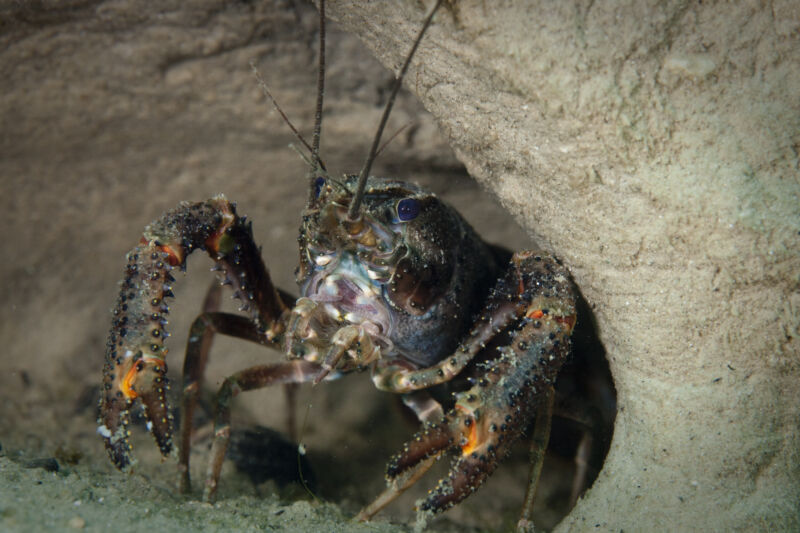In New Zealand, conservation is buoyed by Indigenous knowledge

Enlarge / The northern kura (Paranephrops planifrons), or freshwater crayfish, is both economically and culturally significant to the indigenous Mori people of New Zealand. (credit: Cultura RM Exclusive/Richard Robinson)
Freshwater crayfish have inhabited New Zealand for millions of years. They have dark, hard, and mottled shells, allowing them to blend in with logs and mud as they seek cover from predators. At night the crustaceans search for food, their strong pincers finding and cutting up fish, mayflies, plants, and snails. They are known here as kura, a name given to them by the Mori, the Indigenous Polynesian people who first arrived in New Zealand in the 1300s and who now comprise more than 15 percent of the country's population.
For Mori, the crayfish are economically and culturally significant, both as a delicacy and as part of a traditional value called mahinga kai, which upholds the importance of natural foods, their ecosystems, and the practices of gathering and sustaining them.
Today, kura populations are on the decline and are considered at risk of becoming threatened due to habitat loss, overfishing, and poor water quality. Makarini Rupene, a mahinga kai expert and cultural land management adviser with the local government of Canterbury, has watched this decline in the country's South Island. I was brought up fishing on the rivers, the lakes, the coastline, the ocean," he said. As a child in the 1970s and '80s, he learned traditional practices and their relationship with mahinga kai. Now when he returns to the waters of his childhood, he finds few crayfish.